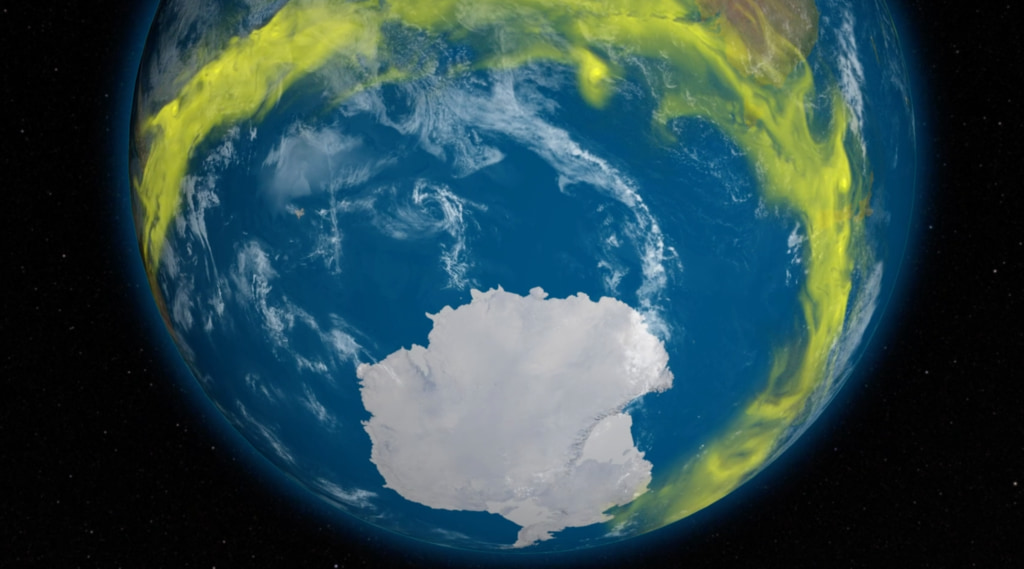What Would have Happened to the Ozone Layer if Chlorofluorocarbons (CFCs) had not been Regulated? (UPDATED)
World Avoided Ozone Full Animation
This video is also available on our YouTube channel.
Led by NASA Goddard scientist Paul Newman, a team of atmospheric chemists simulated 'what might have been' if chlorofluorocarbons (CFCs) and similar ozone-depleting chemicals were not banned through the Montreal Protocol. The comprehensive model — including atmospheric chemical effects, wind changes, and solar radiation changes — simulated what would happen to global concentrations of stratospheric ozone if CFCs were continually added to the atmosphere.
The visualizations below present two cases: the 'world avoided' case, where the rate of CFC emission into the atmosphere is assumed to be that of the period before regulation, and the 'projected' case, which assumes the current rate of emission, post-regulation. Both cases extrapolate to the year 2065. This animation is an update to entry #3586, adding chlorine data and creating a Robinson projection of the ozone data.
World Expected
World Avoided

Expected Chlorine

Avoided Chlorine

Years

colorbar
Credits
Please give credit for this item to:
NASA/Goddard Space Flight Center Scientific Visualization Studio
Ozone data provided by Paul Newman
-
Visualizer
- Trent L. Schindler (USRA)
-
Scientist
- Paul Newman (NASA/GSFC)
-
Producer
- Jefferson Beck (USRA)
Series
This page can be found in the following series:Release date
This page was originally published on Monday, February 9, 2015.
This page was last updated on Monday, June 23, 2025 at 12:05 AM EDT.

